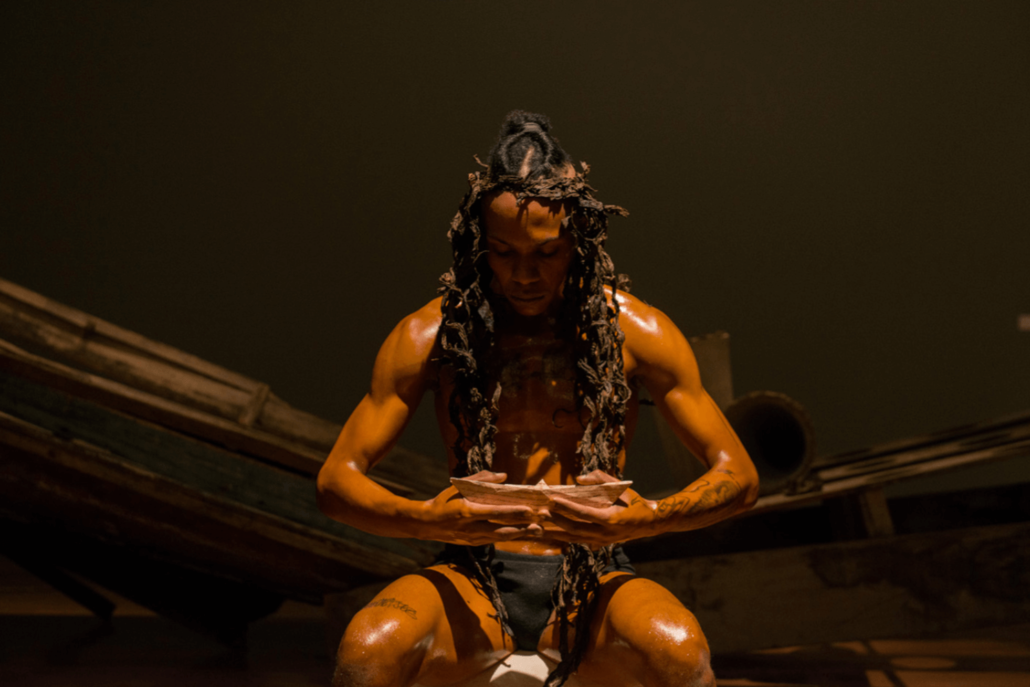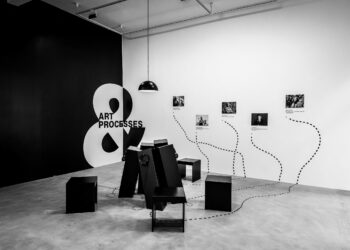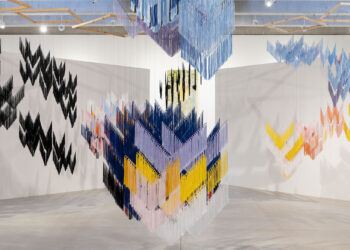A large exhibition by the Bahian artist brings together 63 works, with installations, photographs, videos, performances and records, addressing the wounds left by colonial history.

Ayrson Heráclito, Inner Secrets performance, 1994-2010. Pinacoteca de São Paulo. São Paulo, brazil. Photofrapher: Levi Fanan/ Pinacoteca de São Paulo
The Pinacoteca de São Paulo, museum of the Secretary of Culture and Creative Economy of the State of São Paulo, opens on April 2, 2022, Saturday at 11 am, the individual exhibition “Ayrson Heráclito: Yorùbáiano”, by the artist Ayrson Heráclito. Originally conceived for the MAR Museu de Arte do Rio in 2021, the São Paulo version of “Yorùbáiano” occupies the fourth floor of the Pinacoteca Estação building and is curated by Amanda Bonan, Ana Maria Maia and Marcelo Campos. At the opening, the public will be able to watch the performance “Inner Secrets” (1994-2010).
Ayrson Heráclito brings to Pina Estação the strength of African mythologies that arrived in Brazil from the diaspora, kidnapping and slavery of various African peoples, especially from the 19th century onwards. In the selection of works, the Bahian artist articulates different cultures, encompassing the Yoruban myths or Nagôs and Jejes, to a unique cultural amalgam of ancestral knowledge, teachings, legends, rites and different worldviews that are part of the religious and cultural matrices of Candomblé. . Through the works, the public can get to know the legends, “ìtàns” and “orikis”, traditional narratives that are still present in the streets, processions, novels and plots of Brazilian samba schools, getting in touch with a world where the nature of beings and of the animals complement each other.
Divided into three rooms, the curatorship of “Yorùbàiano” articulates three organic materials that, according to the artist, historically and symbolically compose the “diasporic cultural body”. Sugar recalls the greed of the slave-owning sugarcane monoculture, at the same time evoking the deity or orixá Exú, to whom cachaça is ritually offered. Ayrson also uses the polysemy of palm oil, sometimes symbolizing the vital fluids of the human body.
In one of the rooms, the installation “Regresso à Pintura Baiana” (2002) involves the dyeing of a model of the Church of Rosário dos Pretos, as well as a wall of the museum with palm oil, leaving the field of representation of material painting, characteristic of the artists. 1980s, for the installation, using the precious oil and its yellow-earth color. The video installation “The painter and the landscape” (2011), the installation “Barrueco” (2003), in addition to the photographic series “Vegetable Blood” (2005), among other installations and photographs complete the room.
The meat cured in salt or jerked beef, in turn, alludes to the violence suffered by the enslaved black people while referring to the orixá Ogum, to whom salt is offered in Candomblé rituals. In this space, the installation “Internal Secrets” (1994-2010), documentation of the performance “Transmutação da carne” (2000), as well as the recording of the ritualistic performance “Sacudimento” (2022), performed by the artist around the Pina building Estação, where the DOPS (Department of Political and Social Order) operated, the body responsible for detaining political dissidents in the 1960s and 70s.
The third exhibition room ends the visit with the large photographic installation “Borí” (2008-2011), whose performance was acquired in 2020 by the Pinacoteca through its Patrons program, with twelve large photographs of the ritual of making the head or “borí” ”, representing each of the 12 orixás of xirê. On August 11, the Octógono space, in the Pina Luz building, will host the sacred ritual, lasting about two hours, conducted by the artist, with the presence of musicians and 12 initiates of the African religion.
Ayrson Heráclito (Macaúbas, Bahia, 1968) is a university professor, art historian, curator and Candomblé ogã of Jejê-Mahi matrix. His artistic career began in the 1980s in Bahia. The artist has consolidated himself, in his approximately 35 years of career, as one of the most significant names in Brazil to build a work dedicated to elaborating healing rites, negotiating other relationships with a nefarious past, constantly shaken and ritualistically eliminated in herbal baths. (“ìwá orí”) with fresh water (“omi odò tó ń sàn”) or in the food offered to the heads (“borí”), so that the balance of body and spirit is maintained.
The exhibition will be on view from the 2nd of April until the 22 of August 2022. For more information, please visit Pinacoteca Estação.



